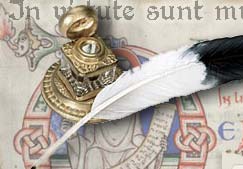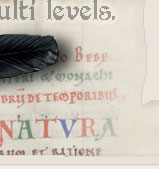Lewis and Clark used codes when corresponding to the President while on their exploration. It is quite simple and goes as following:
(copied from
http://lewisandclarktrail.com/legacy/secretcode.htm) About to head up an expedition into uncharted territory in 1803, Meriwether Lewis had no idea what he would run into. President Jefferson and he devised a secret code just in case the expedition needed to send a message back to Washington, DC.
Now, you can use the same code to send and decode messages with your friends. But, you need a secret password. Lewis and Clark used the word ‘Artichokes’. You can use any password you want; just don’t tell anyone what it is (except those with whom you want to trade messages).
OK, let’s say you want to send a message that says:
Hi! How are you? I’m fine.
The first step is to put the letters of the password, Artichokes, over the letters of the message like this (using the password over and over as many times as necessary):
A R! T I C H O K E S A? R’T I C H O.
H i! H o w a r e y o u? I’m f i n e.
Notice that the punctuation stays the same all through.
The next step is to match the real message letter with the password letter on the attached grid. Let’s do the first letter of the message, ‘H’. The corresponding password letter is ‘A’. Find the ‘A’ in the password line (across the top) and the ‘H’ in the real message line (down the left side). Now go across from the ‘H’ and down from the ‘A’ to find the letter at the intersection, ‘I’. That is the first letter of the secret coded message. Here is the whole message coded (notice that it is all upper case letters, you’ll see why later):
I &! A X Z I F P C G V? &’F O L V T.
To decode a secret message, start the same way. Then, start with the first password letter across the top and go down THAT column until you find the letter from the coded message. Then, follow over to the left-hand column to find the letter in the real message. Write that down under the coded message. One more thing: numbers. To represent a number in your coded message, use a lower case letter. Coding and decoding are the same except instead of using the letters in the left-hand column, use the numbers on the right-hand column.
Basically, what this website is saying is that the message changes depending on the value of the password letter associated with it (for example, if the password was "pass" and I wanted to say "hi," I would rewrite hi as pa and then change "hi" into "wj" because "w" is 16 (p) letters ahead of "h" and "j" is 1 (a) letters ahead of "i".







